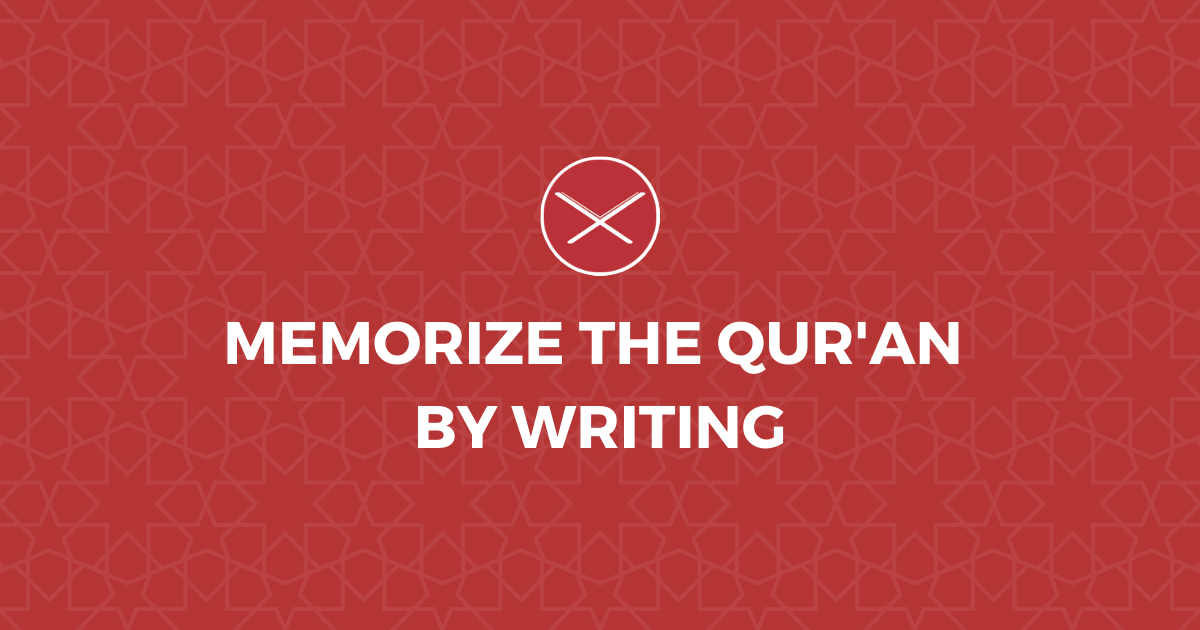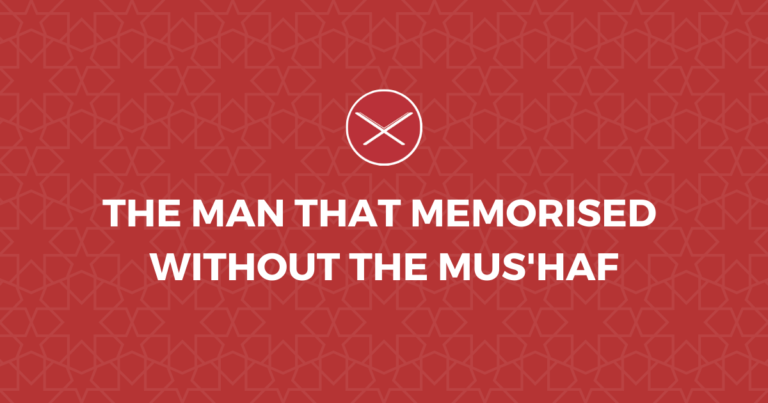The Qur'ān was revealed to be recited by the heart and to impact the heart. It was heavy and needed to be revealed with ease. This means the process of revelation itself shows us a method of memorisation that is not only easy but is built for long-term retention.
Many of you struggle memorising a page, a few āyāt, or even an āyah. Although this may be happening due to various factors. Don't worry. This is not a bad thing. It's an opportunity.
The Qur'ān was revealed over 23 years. It was a process of guidance. There's a method used to memorise the Qur'ān, even today, that uses this model. It's a chance to live and experience something like the process of revelation over a 23-year period.
"We will have you recite (the Qur'ān, O Prophet) so you will not forget (any of it)." (al-A'lā, 87:6)
Writing Quran by hand, a line a day
A practice in Algeria and Andalusia calls to complete memorisation of the Qur'ān in line with the 23 years of revelation. They listen, recite, write and memorise a line daily.
There's a family where a mother who could not write learned to copy from the Mus'haf writing the entire Qur'ān and memorised it. Her children did the same thing, and then their children did the same. It became a generational practice. Imagine your grandparents showing you a Mus'haf that they wrote themselves, tell you what happened when they wrote this āyah and when they wrote that page… It's amazing!
How does it work?
- Take a line from your Mus'haf, so not an āyah, but a line and write it in Arabic.
- Focus on the meaning. It's recommended that you do this before memorising.
- If the line is incomplete in meaning because it's not completely on the line, recite the full āyah (and you can write it out too to complete meaning) but you will memorise only the line.
- Every day you will add the lines together in review.
- As you build up, you can establish a review system that can be taken from any other system.
What a beautiful practice!
In the 15 lined Mus'haf (609 pages, non-'uthmani) there are around 8901 lines, in the 16 lined (taj company) there are 8601, and in the 13 lined there are 10,798 lines. This means there is an average of 1.1 lines a day to do so in 23 years.
Most of us will dismiss this method due to the amount of time but I can't think of no better way of doing Hifz of Qur'ān for those that are serious and have very little time. It reduces stress, strengthens memorization, allows you to manage things better, and avoids cramming. No doubt the blessing found in this method is immense.
There's a school in Jeddah that practices a similar thing using notebooks to write the lesson for the day as well. When I get more information about that, I will share it.
Writing Quran by hand has benefits
The Prophet (ﷺ) said قَيِّدُوا العِلمَ بالكِتاب, "Bind knowledge through writing (it down)" [Sahīh al Jāmi' as-Saghīr 4434]. Knowledge is passed on through writing. When we write we are making a print and when we are sharing it, it seals our knowledge. It improves what we had and we remember it better.
Writing benefits in several ways. It creates further details in memory, you get a reward for writing sacred words, and you will help tie your memorisation. Ustādh Muhammad, a Qur'ān teacher in Netherlands' largest mosque, still uses the Lawh (wooden board) and a handmade quill, an ancient African traditional method for teaching memorisation of the Qur'ān. He says that "50% of the memorisation occurs through the student actually writing it on these boards".
Mauritanian scholars are masters of the Arabic language. They’re well-known for their amazing memory. Most young children have memorised the Qur'ān by the age of 6-7 years. Day and night you’ll hear the Qur'ān being recited: while walking, driving, sitting, standing, etc. They also memorise by writing the Qur'ān. Likewise, places in Egypt, Syria, Sudan, Senegal, Mali, Somalia, Morocco, and most of North Africa are known to use writing on boards. The method has been shared a lot online but is a lot harder than the one I have shared with you. They repeat a page up 500 times!
Writing digitally or on paper?
The very act of handwriting appears to have important cognitive benefits. For example, a study of 15 children in Indiana (James & Engelhardt, 2012) who were asked to write, trace, or type letters while having their brains scanned found that writing letters activated more regions of the brain than typing letters—in particular, visual processing centers at the heart of perceiving letters. Because of these and other cognitive benefits of handwriting, occupational therapists Stevenson and Just (2014) concluded that it's best to hold off on teaching keyboarding to children until ages 10 to 12, after they've fully developed the ability to write by hand.
A recent study of Japanese university students and recent graduates has revealed that writing on physical paper can lead to more brain activity when remembering the information an hour later. Researchers say that the unique, complex, spatial, and tactile information associated with writing by hand on physical paper is likely what leads to improved memory.
Contrary to the popular belief that digital tools increase efficiency, volunteers who used paper completed the note-taking task about 25% faster than those who used digital tablets or smartphones.
If you write on paper, where do you put it?
It's best to have a notebook just for this purpose. Nowadays, people have released Qur'ān sets or complete a complete mus'haf just for writing through tracing or otherwise. You can get one of those.
How frequently do you write?
Do you write it once or do you keep writing? For the above method, you write it once. Although, you may try to write off memory at some point. if you make mistakes, write it again until you write it perfectly.
Allāh grant us all success.
11 - Like and share!






